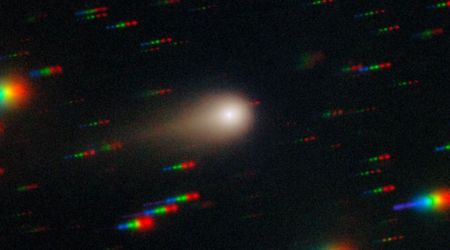NASA is leveraging resources to develop construction technology for Moon and Mars missions

NASA’s Space Technology Mission Directorate is now focusing on constructing technology for on-site extraction and use of resources. The technology will help explorers going to the Moon and Mars to build what they need, and further progress for space applications. The desired means of tech were demonstrated using simulated lunar and Martian surface material, known as regolith, per NASA. The Moon to Mars Planetary Autonomous Construction Technology (MMPACT) project is being funded by NASA’s Game-Changing Development program.

The project is managed at NASA’s Marshall Space Flight Center in Huntsville, Alabama, and is exploring large-scale, robotic 3D printing technology. The application of this technology might help with construction on other planets. MMPACT is developing various means that can process materials on the lunar and Martian surfaces. Basic materials, such as water, can be extracted from the local regolith to reduce launch mass, and the regolith can be used as brick granules. NASA has been studying these materials for decades with large-scale 3D printing pioneer, Dr. Behrokh Khoshnevis, a professor of civil, environmental, and astronautical engineering at the University of Southern California in Los Angeles.

Moreover, the NASA Innovative Advanced Concepts (NIAC) program overlooked the development of the expert’s large-scale extraterrestrial 3D printing. It included the process of Contour Crafting, wherein molten regolith and a binding agent are forced out of a nozzle to create individual layers of an infrastructure, as per NASA. This process can slowly be used to build monolithic structures like radiation shielding and rocket landing pads.

The 3D printing method called selective separation sintering was also developed by Khoshnevis. It includes a process in which “heat and pressure are applied to layers of powder to produce metallic, ceramic, or composite objects.” These creations can be used to make small-scale hardware that is also precise and accurate in its functions. This technique is energy-efficient and can be used on the surface of planets as well as in microgravity locations like space stations. It can produce various items, which include interlocking tiles and replacement parts.

Khoshnevis, however, had a goal closer to home with his company, called Contour Crafting Corporation, as per NASA. He plans to use 3D printing techniques, backed up by NIAC funding, to make housing and other infrastructure on Earth. NASA plans to use this technology to help further the human population off-planet and establish a sustainable human presence in space. ICON of Austin, Texas, is another partner of NASA in additive manufacturing from the list of industry and academic institutions, which is also using 3D printing for home construction on Earth.

This company used robotics, software, and advanced materials, which might help NASA develop space habitats, radiation shielding, roads, and rocket launch and landing pads. ICON also made a 1,700 square-foot simulated Martian habitat with crew quarters, workstations, a common lounge, and food preparation areas, called Mars Dune Alpha. The company’s Laser Vitreous Multi-material Transformation can also melt local surface materials to be used in construction. With many plans ahead for the Moon and Mars missions, these technologies could be one giant leap for mankind.









